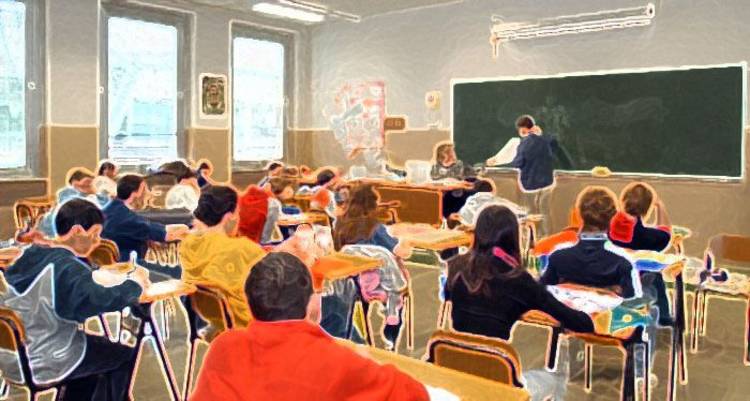ROME – Most Italian schools reopened after the summer vacation on Sept. 15. This was good, for just four days before the Big Day, in a classroom at Tivoli [2] outside Rome, a 3-ft.-square chunk of ceiling fell down. Had school already been in session, students could have been injured. As it was, two teachers gearing up for the new school year were. Such incidents are remarkably common: on Oct. 14, 2008, the ceiling of a classroom at the Darwin Liceo, a high school at Rivoli [3], collapsed, killing 17-year-old Vito Scafidi and seriously injuring four other students.
As if marking that sad anniversary, yet another schoolroom ceiling collapse occurred this Oct. 14 at the Istituto Selvatico in Padua. While there were no injuries, Veneto middle school students launched a region-wide series of piazza protests. As one angry student said: “You simply can’t risk your life by going to school.” In fact, only one-fifth of funding for public schools today goes to infrastructure and four-fifths, to salaries.
The problem of maintaining and improving the physical conditions of Italian public schools would be enormous in the best of times, but is all the more complex during the present economic crisis because the costs involved run counter to the need to give jobs to people, including teachers. The government headed by
Matteo Renzi [4]has offered a plan which would give jobs to 148,000 new teachers and educational helpers while introducing merit promotions. But the Renzi project has come under criticism from teachers because it would cut salaries across the board and from others because the bill – one of the major structural reforms his government proposes – is limited to job creation at the expense of infrastructure.
“The text of the bill doesn’t take into account the lack of those structures indispensable for the normal functioning of a school,”
Mario Pirani [5], author and journalist specialized in economics, wrote in the daily La Repubblica, of which he was a founding father. Pirani also complains that with the “expansion of the offer” comes no specific information about what the students are to study and the teachers to teach in the hours added to the school day. Even if hours are added to the school day, most schools still lack cafeterias.
Another of the proposed novelties is to allow teachers to teach subjects akin to their own specialty, but it is unclear just what this means. Something similar happened in the Seventies, when under-employed graduates of technical schools were encouraged to teach mathematics without specific training in math. The results were unfortunate, to put it mildly, yet here we are again. “In our schools we have graduates in pharmacology who teach math, teachers of sociology teaching English, and so on,” Pirani says.
This is not to denigrate the good news. In Genoa students have literally heroically rolled up their sleeves and, en masse, have turned out to help clean up their drowned city, and have mocked those politicoes arriving belatedly (and with the media in their wake) to give a hand. In the past decade the number of university graduates has doubled, and on pan-European tests Italian graduates score better than even in the recent past. Moreover, the median score in mathematics of an Italian university graduate is of 289 points, not far below the points of the Danes, Finns and Japanese (292), according to an
OCSE [6] study of schools in 30 countries.
But here the OCSE study suggests that the Renzi reform bill is on the right track, for it suggests that an increase of 2% in the number of teachers makes a dramatic difference to the students’ grasp of the material. At the same time the study, according to Andreas Schleicher of OCSE, that although the spending on students worldwide has bounced up by 30% in the past decade, the level of acquired learning has remained flat in most of those countries. And even the OCSE report acknowledges that the typical Italian student
In the meantime the students continue to take matters into their own hands. In Rome the 300 students who organized a two-day sit-in at the prestigious Giulio Cesare classical high school risk formal investigation by a prosecutor on potential charges of “invasion of a public building.” At the same time school principal Carla Sbrana has acknowledged that the students did no damage and on the contrary had actually cleaned off offensive graffiti from the walls, including a swastika by her name. To this a student added that, “We also repainted a dressing room wall.” Three other Roman schools are also witnessing marches and student assemblies.
In another genuine innovation, this week Lazio Region
President Nicola Zingaretti [7] put forward four financial projects for the school year 2014-15 for some $160,000 to focus on prevention and monitoring of homophobia and LGBT bullying. The project will involve parents as well as teachers, researchers and psychologists.


